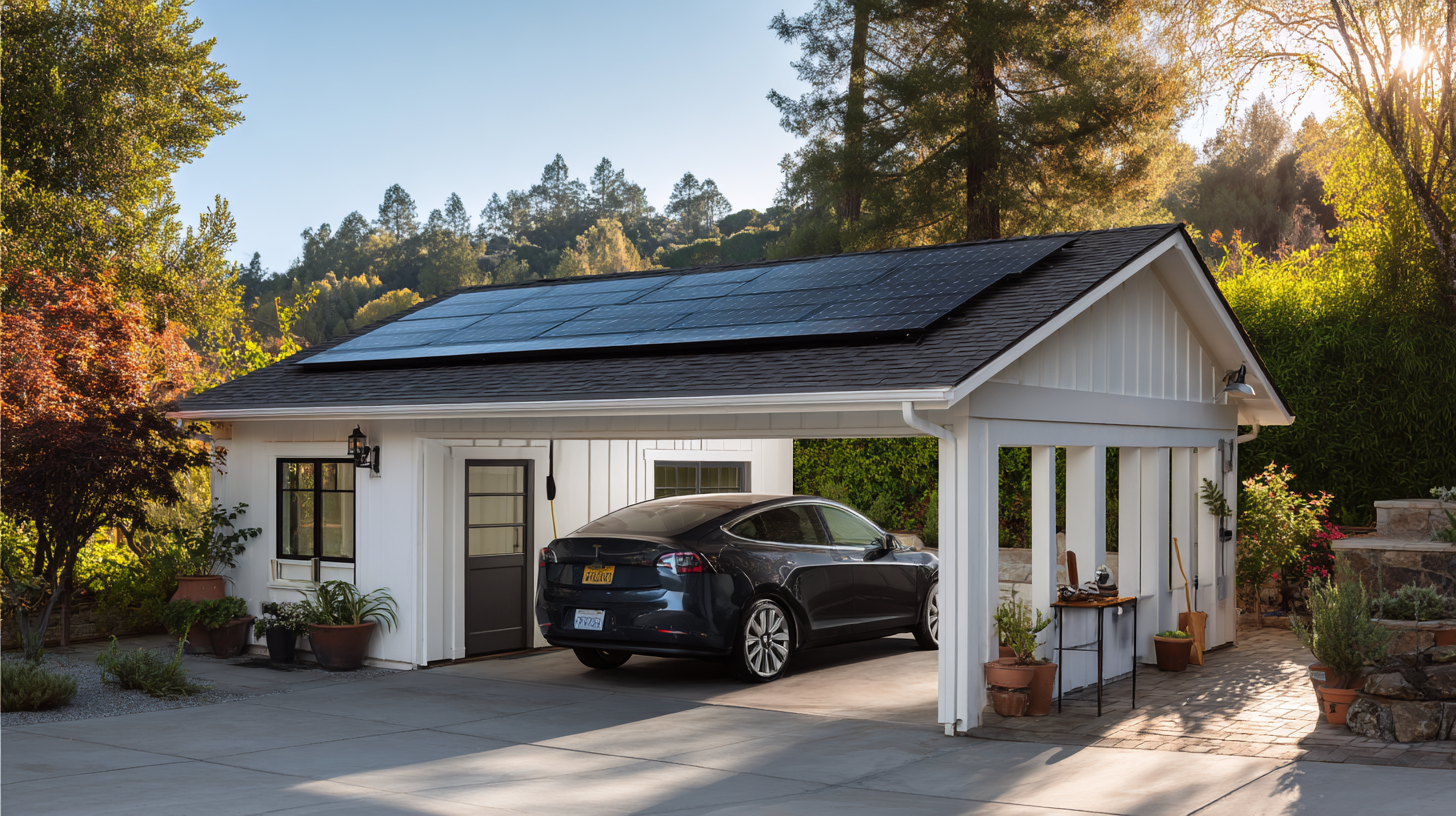Tel : 94870 36000, 94860 36000, 94890 36000
Unlocking the Future: How Power Solutions Solar Can Transform Your Energy Consumption
In an era where sustainable energy solutions are paramount, "Power Solutions Solar" emerges as a frontrunner in revolutionizing energy consumption. According to the International Energy Agency (IEA), solar power is projected to become the largest source of electricity globally by 2040, with installation capacities expected to reach over 4,800 gigawatts. This shift not only highlights a growing preference for renewable energy but also underscores the critical role that innovative solar technologies play in reducing dependence on fossil fuels. As businesses and households increasingly turn to solar solutions, the potential for cost savings is substantial, with estimates suggesting up to 70% reduction in electricity bills. By harnessing the power of the sun, Power Solutions Solar aims to unlock new efficiencies, drive down energy costs, and pave the way towards a more sustainable and resilient energy future.

Table of Contents
[Hide]
The Importance of Solar Energy in Modern Power Solutions
 Solar energy plays a pivotal role in modern power solutions, providing a
sustainable and renewable source of energy
that can significantly reduce our dependence on fossil fuels. As the world grapples with climate change
and dwindling natural resources, harnessing the sun's power becomes not just an option but a necessity.
Solar energy systems can be adapted for various scales, from residential rooftops to large-scale solar
farms, making it accessible for individuals and businesses alike. This flexibility allows for a seamless
integration into existing power infrastructures, helping to optimize energy consumption and reduce overall
carbon footprints.
Solar energy plays a pivotal role in modern power solutions, providing a
sustainable and renewable source of energy
that can significantly reduce our dependence on fossil fuels. As the world grapples with climate change
and dwindling natural resources, harnessing the sun's power becomes not just an option but a necessity.
Solar energy systems can be adapted for various scales, from residential rooftops to large-scale solar
farms, making it accessible for individuals and businesses alike. This flexibility allows for a seamless
integration into existing power infrastructures, helping to optimize energy consumption and reduce overall
carbon footprints.
Tips: To maximize the benefits of solar energy in your home, consider starting with an energy audit to identify areas where you can improve efficiency. Investing in energy-efficient appliances can complement your solar system and reduce energy consumption. Additionally, look into local incentives and rebates for solar installations, as these can lower upfront costs and improve the return on investment.
As communities move toward greener alternatives, the importance of solar energy will continue to grow. Not only does it provide a cleaner environment, but it also promotes energy independence. By incorporating solar power into modern energy solutions, we can foster innovation and create a more resilient energy grid that stands up to the challenges of the future.
How Solar Technology Enhances Energy Efficiency
Solar technology is rapidly transforming the landscape of energy consumption, enhancing efficiency while reducing costs. According to a report from the International Renewable Energy Agency (IRENA), the global solar capacity reached 710 gigawatts (GW) in 2020, demonstrating a remarkable average annual growth rate of 22% over the past decade. This exponential increase highlights the growing reliance on solar solutions as a means to mitigate the effects of climate change and decrease dependency on fossil fuels.
In addition to their environmental benefits, solar technologies also improve energy efficiency when integrated into residential and commercial applications. The U.S. Department of Energy indicates that solar energy can reduce electricity bills by 70% in some cases, allowing users to reclaim precious resources while generating clean, renewable energy. Furthermore, advancements in photovoltaic systems are enhancing energy conversion efficiency, with some models exceeding 22% efficiency rates. Such improvements signify a promising future where solar solutions not only empower consumers but also contribute to global energy sustainability.
Transformative Benefits of Adopting Solar Power for Households
As households increasingly turn to solar power, the transformative benefits become evident across various socio-economic landscapes. Rural communities, for example, are stepping up to lead this clean energy revolution, showcasing how solar initiatives can enhance energy resilience. Projects like Detroit's Neighborhood Solar Initiative illustrate the potential for revitalizing vacant land into productive energy sites, significantly contributing to local power needs while addressing environmental concerns.
Moreover, the integration of smart technologies into home energy management systems is reshaping how families consume energy. The global surge in energy-efficient technology allows homeowners to better control their energy use, leading to lower costs and a smaller carbon footprint. In countries like Ethiopia, access to clean energy sources like biogas digesters is not only providing families with reliable power but also improving health outcomes and reducing reliance on harmful fuels. This trend underscores the crucial role that solar power can play in making clean energy accessible and sustainable for households worldwide.
Transformative Benefits of Adopting Solar Power for Households
Cost-Effectiveness of Solar Solutions in Long-Term Energy Savings
The rising costs of electricity are a pressing concern for both households and businesses, especially for those facing monthly bills exceeding 250 to 1000 Malaysian Ringgit. As a result, there is an increasing urgency to adopt solar solutions, which can provide a reliable and cost-effective alternative to traditional energy sources. The projected growth of the global solar battery market, from 6.39 billion dollars in 2025 to 19.1 billion dollars by 2032, reflects a broader trend toward sustainable energy. This shift not only alleviates financial burdens but also contributes to environmental sustainability.
In regions blessed with abundant sunlight, such as Malaysia, rooftops have become the frontline in this energy revolution. The transition to solar energy empowers families by reducing their dependency on the grid and unlocking significant long-term savings. As more users adopt these technologies, solar energy is transforming the landscape of energy consumption, making it a viable and attractive solution for combating climate change while simultaneously enhancing economic resilience. The future of energy may very well lie in harnessing the natural power of the sun.
Future Trends in Solar Energy Innovation and Its Impact on Consumption
As we progress into 2024, the solar energy sector is poised for revolutionary advancements that will significantly reshape energy consumption globally. The solar rooftop bracket market is projected to grow from $14.56 billion in 2024 to $38.34 billion by 2032, reflecting a remarkable annual growth rate of 11.7%. This growth is indicative of a broader trend where sustainable technologies are at the forefront of innovation, pushing for greener solutions that benefit both consumers and the planet.
The increasing emphasis on renewable energy sources is driven by urgent global challenges such as climate change and energy security. Innovations in solar technology are not only enhancing the efficiency of energy consumption but are also making solar solutions more accessible to a wider audience. In this rapidly evolving landscape, the total global solar market is expected to surge from $25.69 billion in 2023 to $436.36 billion by 2032, showcasing a robust compound annual growth rate of 6%. This trend highlights the significant impact of solar energy innovations on achieving sustainability goals and transforming the way we interact with energy resources.

Related Posts
-

Top 10 Solar Panel Solutions from Chinese Manufacturers at the 137th Canton Fair
-

Quality Focus Chinese Manufacturing Leading Global Exports of Best Home Solar Solutions
-

A Comprehensive Comparison of the Best Solar Panels Solutions for Your Home
-

Innovative Solar Solutions for 2025 Exploring the Future of Best Solar Technology and Its Alternatives
-

Innovative Solar Power Water Heater Solutions Driving Sustainability in Global Markets
-

Future Insights on Best Solar Water Purification Technology Advancements and Their Advantages by 2025

